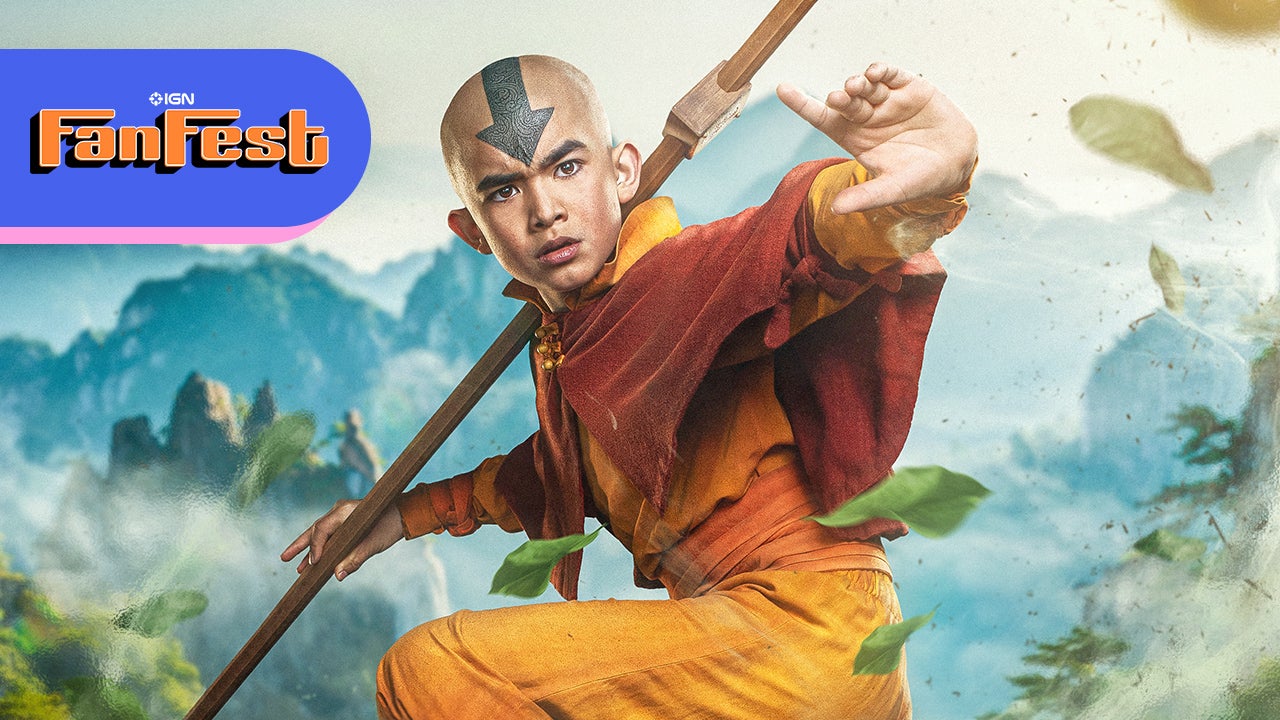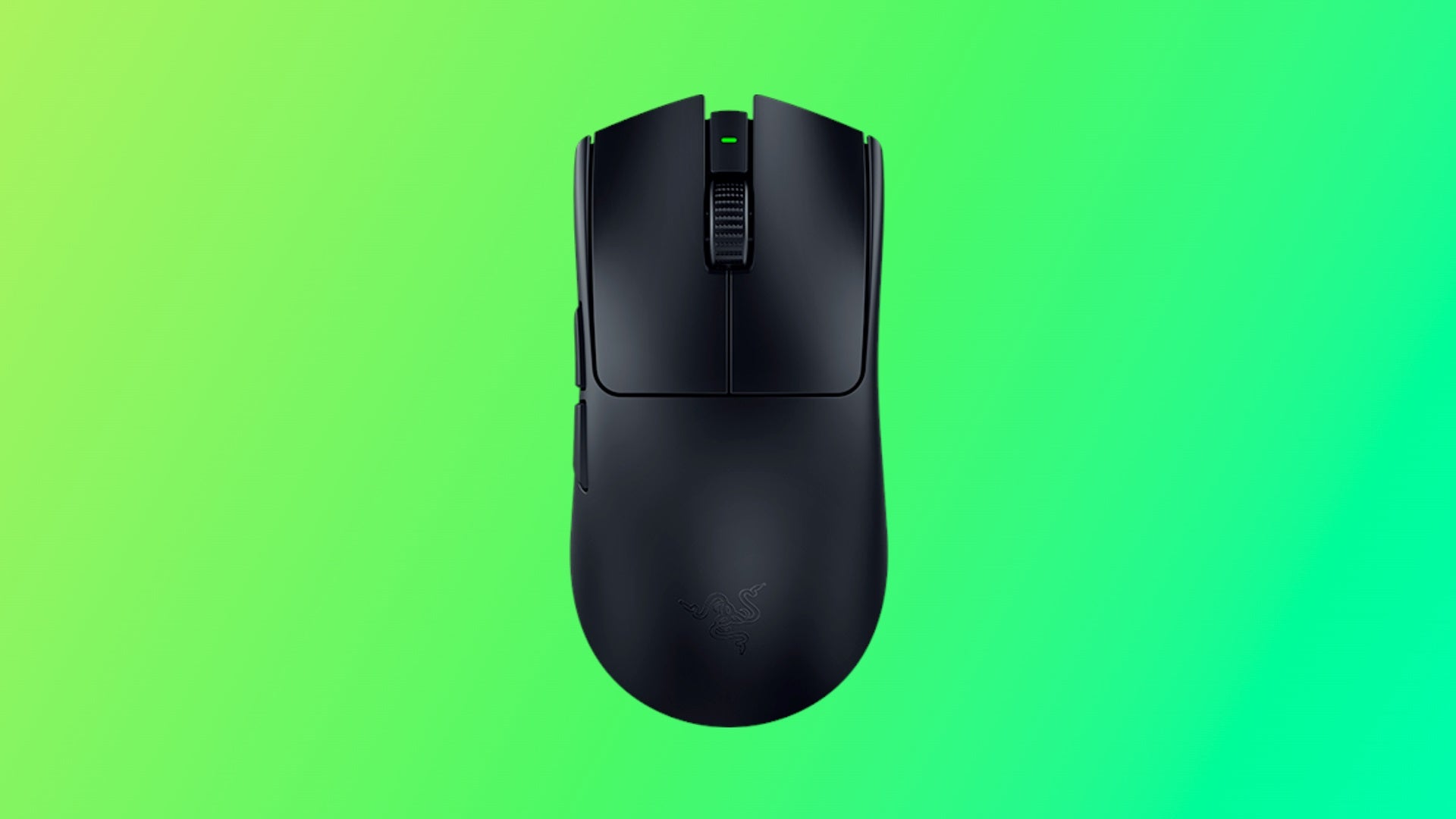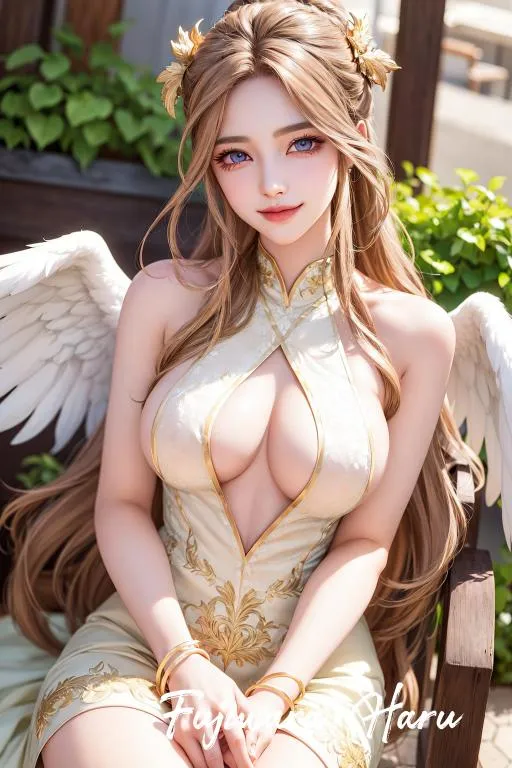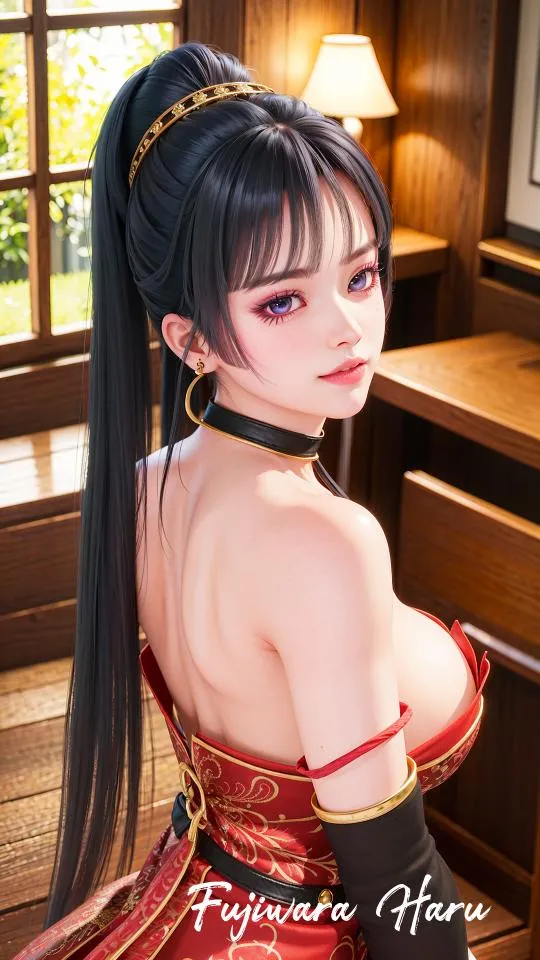IGN Fan Fest returns this week with a lineup that’s filled with some of the biggest names in games, movies, TV, anime, and comics like Dune: Part Two, Godzilla x Kong: The New Empire, Fallout, WWE 2K24, and so much more. The festivities kick off today, Feb. 19, and will keep going throughout the week with exclusive interviews, trailers, gameplay, sneak peeks, and more surprises, along with our main event of two days of Fan Fest livestreams on February 23 and 24 from 10am PT/1pm ET/6pm GMT. Join us at 9am PT/Noon ET for exclusive reveals throughout our countdown! (If you live in Australia, that translates to Feb. 24 and 25 from 4am AEST - 6am AEST.)
There's no better way to commence IGN Fan Fest 2024 than with an exclusive clip and deep-dive on Netflix’s Avatar: The Last Airbender. Our reporter Alex Stedman chronicles her visit to the set and what insights she learned from the series’ creators and stars. She also provides a preview of what the cast told us in their upcoming Fan Fest interview streaming this Friday, Feb. 23rd. (Here's how to watch IGN Fan Fest 2024.)
It’s June 2022, and the Fire Nation is attacking the Northern Water Tribe.
Or, at least, that’s what’s very much playing out in front of me and a gaggle of other journalists on the Vancouver set of Netflix’s live-action Avatar: The Last Airbender. Throughout the day, we watch the thousands of LED panels within the volume shift around the real-life actors, who twirl and jab and dance in various martial arts styles to bring to life the battles of the animated classic. It’s surreal and immersive – at any moment, a group of Water Tribe residents might get in the snack line behind you. Or, just maybe, Aang himself will pop over your shoulder to get a glimpse at your notes.
It’s something that’s noticeable throughout our visit to the set. For a lot of the young cast, this is their first time doing interviews about their live-action translations of these beloved characters, and there’s a sense of nervousness… behind just about everyone except for Gordon Cormier, who arguably has the most pivotal role in the show as the titular last airbender, Aang. If the 13-year-old (now 14) feels the pressure, he doesn’t show it – in fact, he seems perfectly at ease as he chats with the journalists throughout the day, his father always close in tow.
Plus, the kid just seems like he loves it here on the set. When I ask him what the most complicated scene he’s shot yet is, he can’t sit still while he recounts the story of filming his fight with Zuko in Omashu. Instead, he jumps out of his seat and performs.
“Zuko is like, ‘I'm going to get you.’ I jump over the table, I get over, he grabs a staff, he tries to swing at me,” Cormier says, miming a punch.
“Then I'm like, ‘Uh-oh,’ I duck under the table.” You guessed it – Cormier ducks under the table.
“Then I hop back up, I grab a bowl – and this took, I don't know how many tries – but after I duck under, I grab the bowl, I flip it, I catch it, and then he stabs into it,” he continues, acting it all out as he goes. “Then he has this staff, I kick it and it hits him in the face and I just run away.”
Eventually, Cormier sits back down, satisfied, if a bit frazzled: “I just lost my train of thought.”
And, as Cormier hops around in front of us, all childlike excitement and curiosity, it’s little wonder that showrunner Albert Kim and the bevy of other producers just couldn’t get their minds off Cormier after his initial audition.
“You see someone, and you realize they've somehow captured the essence of a character,” Kim tells IGN. “That's what it was like when we first saw Gordon. He just seemed like Aang.”
He revealed as much in a wide-ranging interview with IGN a few weeks ago, the culmination of a year and a half of coverage on Netflix’s live-action Avatar: The Last Airbender for this digital cover, anchoring IGN Fan Fest 2024. With various interviews with the showrunner, cast, crew, and more, we’re gearing up for the release of the eight-episode adaptation, hitting Netflix on February 22 – and hopefully giving you the most comprehensive preview, too.
For his part, Kim always knew casting on his Avatar: The Last Airbender “was going to be probably the biggest challenge of them all because you're asking a hell of a lot from some very young performers.”
They are, indeed, asking plenty of this young cast. Aside from the complexities and growth behind each individual character, there is a lot of pressure behind the adaptation. Nickelodeon’s Avatar: The Last Airbender is not only one of the most beloved animated series of all time, but it’s probably safe to say it’s one of the most beloved television series period, animated or live-action. Plus, there’s no erasing the stain of the much-derided 2010 M. Night Shyamalan film adaptation (which Kim has purposely avoided, he revealed previously).
Basically, there are a lot of eyes on Kim, Cormier, and the entire production, and Kim knows it. He even reveals that his own son was hesitant about him taking on the project, given how protective fans are of the property.
“He is in the contingent of fans that think you cannot improve upon the original,” Kim says. “So he was a little wary. And he was also probably a little worried for me because he also knows how ruthless the fans and the online community can be if you get something wrong, so he was a little bit protective of me on that side, but I think we won him over.”
The pressure increased, too, after original Avatar creators Michael Dante DiMartino and Bryan Konietzko announced in 2020 that they were leaving the series. Originally executive producers, DiMartino and Konietzko said in an open letter that “things did not go as we had hoped.”
“Having them leave was a blow,” Kim admits. “And we had to think about whether or not the vision that we had set forward really reflects and honors the spirit of what they had created. And we felt like it did, so we went forward with it. But it's not to say that when they left, we said, ‘Forget everything they've done.’ That was never going to be the case, regardless of their involvement with the project. So I think that hopefully we honor, like I said, the spirit of the show that they originally created in the version we made.”
And at the heart of that spirit: The Last Airbender himself, Aang.
Finding The Last Airbender
All that pressure and pre-established fame made casting even more difficult, too, given that the process would need to be shrouded in secrecy. Therefore, all the young actors auditioning couldn’t know who or what they were auditioning for – but Cormier pulled through anyway.
“He was acting as some character named Alan in a show about mathematics or something,” Kim recalls. “We saw in him something that was kind of an essential version of Aang there. And we kept coming back to him. We saw lots of other actors as well, but after every round of auditions, we were asking ourselves, ‘What about Gordon? I mean, they're not as good as Gordon. Can we go back?’“
Not that knowing who the character was would’ve made that much of a difference for Cormier. He admits, somewhat sheepishly, that he didn’t have much familiarity with the series before he auditioned. But don’t worry, that’s changed.
When I ask how many times he’s seen it now, Cormier won’t give me a straight answer – at least, not right away. He makes me guess.
“5?”
“I’ll give you a clue,” Cormier says. “It’s a lot more than that.”
“12?” I’m not even close.
“I’ve seen it 26 times,” he proudly reveals once he’s taken pity on my guesses. “It’s my favorite show.” Oh, and actually, 26 is just when he stopped keeping track – he’s seen it a lot more since then, too.
With a resume like that, Cormier knows Aang pretty darn well at this point. While the showrunners have been open about the fact that the live-action adaptation won’t be slavishly loyal to the cartoon – with Aang in particular, Kim says they gave him more of a “narrative drive” from the beginning – Cormier says the way he’s playing Aang is “as similar as it can get in a live-action.”
Cormier relates to the character, too, in perhaps the most wholesome way possible.
“I mean, me and Aang, we are so happy,” he says. “I don't know, sometimes I might be too happy, but I feel like that's one of our similarities.”
And, despite all the fun Cormier is clearly having here on the set, he takes it seriously. Like the rest of the main cast, Cormier attended a six-week boot camp to perform the show’s stunts. Luckily, Dallas Liu and Ian Ousley, who play Zuko and Sokka respectively, were already martial artists, but all of the actors had to learn various styles during that month and a half of training.
“They taught us all four elements in that boot camp,” Cormier says. “We learned Bagua for airbending and Wushu for airbending. We learned Tai Chi and Wushu for waterbending. We had Shaolin kung fu and Wushu for firebending and Hung Ga and Wushu for earthbending.
Plus, it goes beyond physical for the young actor. If it seems like he really is Aang, that’s kind of how Cormier feels, too.
“Most people, they'll study the script and they'll read the scene a hundred times,” he explains. “Me, I'll read the stage directions once or twice, I'll memorize my lines. And once I get there and I hear the other person speak, I just sink into it. So when I do that, I am Aang. I'm thinking, ‘Zuko is coming for me,’ all these things. And that's all up there. So yeah, I think that I get pretty deep into the character.”
It helps that he speaks to the group of us in full costume, blue arrow painted across his bald head. To nail that Aang look, Cormier says he has his head shaved every morning, and he compares the arrow-application process as something akin to getting a henna tattoo, but with more medical supplies.
Of course, Cormier isn’t the only one taking on a big role in Avatar: The Last Airbender. Hell, he’s not even the only one who has to have his head shaved daily.
Everything Changed When…
Up close, Zuko’s burn scar might look a little gnarlier than you might expect. Or at least, the Netflix version of it does, as Liu, who’s taking over the role of everyone’s favorite troubled Fire Nation prince, sits in front of me.
As he explains, it’s a two-hour process every shoot day. “I think it’s a rubber piece or plastic, something along those lines,” he says. “And it’s glued to my face.”
“It's cool because I can totally feel it on my face,” he says, running his fingers over his pseudo-scar. “And with Zuko, the scar is a huge part of his identity, at least at the start. So with this scar, I think it also plays into how I play Zuko.”
Elizabeth Yu, who’s taking on the role of Zuko’s sister Azula, says her costume – “wearing leather armor that was molded to my body” – helped her get into character, too, especially since she’s much kinder than Azula.
"It was cathartic to be able to play that character because I'm so opposite in real life,” she laughed in an interview with the cast for IGN Fan Fest. “It's like therapy. It's very therapeutic to be mean."
Speaking of Azula, her role is decidedly heightened in this live-action adaptation, at least early on. Azula, as well as her and Zuko’s father Fire Lord Ozai (played by Daniel Dae Kim), don’t really show up until later seasons of the animated series, but fans can expect both to pop up quite a bit more in the early days of the Netflix version.
That’s no accident, of course. Showrunner Albert Kim explains that it was a “conscious decision” to push those storylines more to the forefront, largely in service of Zuko’s character. In fact, he confirms we’ll even see that fateful Agni Kai (a firebending duel) between Zuko and Ozai, the one that granted the former that famous scar.
“I felt like we needed to balance out the storylines,” Kim says. “We needed to know more about the background for Zuko, and why he's doing what he's doing, and set that in the context of his family dynamic, and how he fits in with his father and sister.”
“And that's something they get to later in the animated series, but we had a little bit of a benefit of hindsight,” he continues. “We knew where that was going, so we could pull some of those elements up front into the first season and make the first season a little bit richer and a little bit deeper in terms of character storylines.”
Plus, Kim admits, it’s a travel show with a lot of locations, so being able to return to the Fire Nation throughout the eight-episode first season helped from a logistical standpoint, too.
Liu, though, says he’s staying focused on those early days of Zuko’s character development. Basically, he’s not watching the entire series 26 times as Cormier did, but keeping his thoughts on Book 1, at least when I spoke to him on the set.
“I wanted to stay in that mindset where he's still fighting to capture the Avatar, and that's pretty much his only life mission, and that's all he knows,” he says. “I think capturing the Avatar is pretty much Zuko's identity at this point in the story, and we'll see where he goes from there.”
And, as fans know, where Zuko does go becomes one of the most beloved redemption arcs in TV history – but that’s later. For now, he’s a ferocious enemy, reserving seemingly his only soft spot for Uncle Iroh (Paul Sun-Hyung Lee). You can see Zuko and Iroh team up in an exclusive clip below.
That aforementioned redemption arc is why Zuko is a favorite among fans – and it’s also partially what leaves Liu with such big shoes to fill. The other part of that legacy is Dante Bosco’s lauded voice-performance in originating the character, but Liu makes it clear that he’s not simply just trying to replicate Bosco’s angsty teenage charms. In fact, that was Bosco’s own advice for him in the various conversations they had, Liu revealed during the Fan Fest interview.
“He said he was passing me the torch, and I don't think I really felt it until we finished the [season] and I got to really talk to him about my experience on the show and becoming the character fully,” Liu says.
“He really wanted me to make Zuko my own,” he continues. “There's Dev Patel (from M. Night Shyamalan’s 2010 adaptation) and Dante Bosco, which are two inspirations. So actually, he was hoping that I could do my own thing, maybe grab some inspiration from him, some from Dev, just make this big mash-up my own Zuko."
Asserting some of that Zuko confidence, Liu proudly reiterates, “It’s gonna be my Zuko.”
Of course, Aang isn’t on his own as Zuko chases him around the world. He’s famously joined by brother and sister duo Sokka and Katara, played by Ousley and Kiawentiio respectively.
Going with the Flow
Funnily enough, despite the aforementioned secrecy of the audition process, Liu eventually deduced who he was auditioning for – “I was like, ‘no one hates their dad this much,’ “ he jokes. Ousley, however, didn’t know he was auditioning for Sokka… at least, not for the most part.
By the time Avatar came along, Ousley was in the thick of searching for roles in general, estimating that he was probably doing about three auditions a week at that point:
“That's what you do as actors, is just self-tape, hope you hear something, self-tape, hope you hear something.”
Sure, he was aware that Avatar: The Last Airbender was casting – but for this untitled Netflix project to be it? Nah.
“I was flying to help my sister drive back to LA from college and I was like, ‘I don't want to say this, because there's almost no probability it's true, but the only thing I can think of is Avatar,’“ he remembers on the set. “‘But I can't even fathom that, because that would be insane.’"
If you couldn’t guess from that, Ousley, like the rest of the cast, is a fan of the animated series. But, unlike Cormier, he grew up with the show and even remembers being at the pool as a kid and running his arm over the water, trying to waterbend. (Ironic, then, that he’s playing the only non-bender of the main cast).
“(Sokka’s) kind of the more relatable one. I thought I was Zuko (when I was a kid), but in real life, I'm Sokka,” he jokes during our Fan Fest interview.
Sokka, too, is a big part of the comedic relief of the Nickelodeon show. That balance between humor and the massive stakes of the series, Kim says, was part of the “essential tightrope that we had to walk.”
“You wanted to stay true to the original, which had a large component of humor, lots of action, lots of darkness too,” Kim says. “...So for us, it was about striking that right balance, of making sure you were true to the D.N.A. of the original. But at the same time, we had to make it a serialized Netflix drama, which meant it couldn't just be for kids. It had to also appeal to the people who are big fans of Game of Thrones. And so, it had to feel grounded and mature and adult in that way too.”
Ousley feels that balance in Sokka – he highlights the character’s comedic elements as the aspect he was most excited to bring to life. Somewhat echoing Kim’s sentiment, a big part of Sokka for him was finding that “happy medium” between the humor and the emotional moments, while always trying to bring comedy to the table.
“He's deadpan, he's kind of outrageously realistic at times, which is pretty funny,” Ousley says. “But yeah, he's always high stakes. A lot of times his comedy, I feel like, almost comes from this situation.”
Ousley also teases that a major part of delving into these characters more is exploring their relationships, and a big one for Sokka is no doubt the one with his sister, Katara. Hers is also one of Avatar’s most famous arcs, starting less sure of herself and ending the series as a much more self-assured warrior. She goes through a lot to get there, of course – when asked what future scenes she would most like to play as Katara, Kiawentiio mentions the dark bloodbending arc that comes much later in the series.
But, we won’t get to see that unless Netflix orders more Avatar: The Last Airbender. When talking about what we’ll see here in Season 1, Kiawentiio says, “We see a lot of Katara’s traumas and a lot of her insecurities.”
“We see her kind of struggle with that, particularly throughout the season,” the actress says. “Without giving too much away, when she starts to feel more confident in herself, there's an obstacle. And that really kind of pushes her to be completely confident in herself and not let anybody ruin that.”
Like the rest of the cast, Kiawentiio, too, points to the bonds she’s made with the other actors throughout filming. Ousley even mentions during the set visit that he’s roommates with Liu now if you can picture Sokka and Zuko trying to live together.
Throughout all the interviews, that’s one feeling that remains – yes, all eyes are on this big-budget production of a beloved property, but it’s hard to deny that it’s fun just to watch them have fun.
During our Fan Fest interview, for example, Cormier, Kiawentiio, and Ousley struggle through laughter to share a story of Cormier filming a particularly serious Aang scene. As Kiawentiio explains, they got into the habit of yelling “slay!” at various moments throughout the production… and took the opportunity to do so while Cormier was trying to be very serious as Aang.
“We're trying to build morale,” Ousley says. “We're low-key in a rush at the end of the day. So Kiawentiio was like, 'Wait. Slay.' "
“So me and Ian are in the back going, 'slay!' And we're like 'Gordon slay!’“ Kiawentiio laughs.
Cormier’s response, through tears? “I can’t slay right now!”
It’s charming anecdotes like those that cut through the high stakes surrounding the series, but make no mistake – Netflix is investing a lot in Avatar: The Last Airbender. After all, it’s a fantasy series that’s built on travel, and none it works if it looks cheap.
Bringing it All to Life
The actual filming of Avatar: The Last Airbender is pretty innovative regarding tech. As Netflix announced back in 2021, it partnered with VFX and virtual production studio Pixomondo to create an absolutely massive virtual set in Vancouver that’s 84 feet across and 28 feet high, featuring 23,000 square feet of stage and more than 3,000 LED panels. It’s the kind of volume that The Mandalorian made famous and one that’s necessary for a show with as many locations as Avatar: The Last Airbender.
Or, as virtual production supervisor and Pixomondo head of production Josh Kerekes puts it, “Have you heard of The Last Airbender? It's effectively a travel show. It's a fantasy travel show, and every episode it seems we're almost in a different bio.”
“We're relying on a very new technology to build probably the most amount of environments I've ever done on a show personally within a TV budget, TV schedule,” Kerekes says on the set. “That in of itself is quite ambitious. We're going from the South Pole to mountains, to tropical seaports, to ships at sea, to flying on a sky bison, sometimes all within the same week. We're just rapidly changing between very different types of environments, very different feels and moods.”
To get more specific, Kerekes says Pixomondo built about 26 different set-ups, with almost 100 “different scenarios.” Take the Northern Water Kingdom, for example – sure, that may be one location, but it goes through various states throughout the first season. Kerekes says there’s a pre-attack version, then one where the kingdom is 40% destroyed, then 90% destroyed.
It, as Kerekes describes, is not a seamless process, but trust me – when you’re standing in the middle of the virtual set, it sure feels that way. At a certain point during our set visit, we journalists were allowed to wander the volume, experiencing first-hand as the LED screens surrounding us changed our location. At first, we’re in the Northern Water Tribe as it’s under attack – moments later, seemingly with little effort, we’re in the depths of Bumi’s mansion in Omashu.
“In order to be successful in that, everyone needs to be really collaborating seamlessly with each other,” Kerekes says. “In order to go from the South Pole to the North Pole, it takes a small army to ensure that all those pieces look and feel right.”
It’s not all digital, of course, with physical props throughout the volume and elsewhere on the set to help the actors interact with them. One of the most notable examples of this? Everyone’s favorite sky bison, Appa.
For scenes where Aang, Sokka, and Katara are flying about the world, there’s a mini set with a giant rig of Appa right in the middle. It allows the cast to hop on the creature, yell “yip yip!” and truly be immersed across the world – and it helped them conceptualize just how dang big Appa is.
“When you go back to the animated series, he varies in size throughout the episodes,” Kim says. “If you really pay attention, you go, ‘Oh, wow, there's not really a set size for Appa.’ So we had to do this process, where it was done with virtual reality goggles. I put them on, and we just looked up at our different models, and we had different sizes of Appas. And you just had to decide, ‘That's too small, and that's too big. That feels just about right.’ So it was kind of that process.”
The team, too, has plenty of other VFX concerns outside of the locations and creatures. Obviously, a big part of The Last Airbender is the bending aspect of it, and you can just ask Shyamalan – if that doesn’t look good, none of Avatar does.
Executive producer, director, and VFX supervisor Jabbar Raisani spoke in more depth about bringing the various styles to life in a trailer breakdown with IGN. Part of it, he explains, is even making the bending between various characters feel different, like in the above clip.
“We really tried to differentiate the bending as much as we could while making it feel like a unified event, as in all of our firebending should look like firebending, but Iroh's looks slightly different than Zuko's, which looks slightly different than Ozai's, which looks different than Azula's,” Raisani says. “And we also try to differentiate them with sound design. So if you listen really closely to when Iroh bends, you'll hear almost a dragon sound underneath all of that bending.”
There’s, obviously, quite a lot to it. Even though Kim says firebending might’ve been the easiest to bring to life, Raisani cautions that not even that was the least bit simple. The most complicated, though?
Well, let’s just say water physics are difficult.
“When someone gets wet, we expect to see that amount of wetness,” Raisani says. “We expect to see it travel or track throughout a scene. So that was the thing that was a real challenge.”
This was one of the many balancing acts The Last Airbender had to juggle: where do they focus their efforts in a series that can be so difficult, logistically, to pull off in live-action?
“It's like, ‘Okay, when someone does get hit with water, how long does that water have to exist before the audiences will accept that it's no longer there?’ Because we're just literally just running up money on something that isn't really telling any more story,” Raisani explains. “That [is what] we're really trying to focus our efforts on. Where does the money tell the story? And after that, when will the audience accept that it's no longer there?”
And those are just the visuals; the story – and what liberties you do and don’t take – is just as important.
Bending the Rules
Kim has been open about the fact that his Avatar: The Last Airbender isn’t a 1-to-1 adaptation of the animated series. After all, even the structure is different, going from 20 20-minute episodes to eight hour-long episodes, in addition to the switch to live-action.
“I've used the term that this is a remix, not a cover, in that you've got to hit a lot of familiar notes, but you can't forget that this is supposed to be a new song,” he says. “So obviously, there are story points and characters that you have to do fairly faithfully from the original. But at the same time, you're literally translating something from 2D to 3D, and that meant dimensionalizing the story, taking it into new places, filling in some of the gaps.”
“And when it came down to directing it or the visual effects on it, I mean, we were really watching the animated series, basing our sequences off of that, using as many shots that we could lift from that as it made sense within the context of the story we were telling,” Raisani says. “And that stayed true all the way through post-production and visual effects.”
It’s another sentiment that runs true throughout chatting with the creatives, cast, and crew: the foundation may be the same, but the journey will be a little different. It may be a controversial approach for a property as beloved as Avatar: The Last Airbender, but Kim and Raisani are confident – or, at the very least, hopeful – that it’ll be embraced by the fans.
“I think, as a fan of the (original) show, they're going to get the live-action version of the show they've always hoped they would get,” Raisani says.
“This is the version of Avatar that I would want to see as a fan,” Kim concludes.
And the fans will get to see soon enough.
Avatar: The Last Airbender hits Netflix on February 22, 2024.




